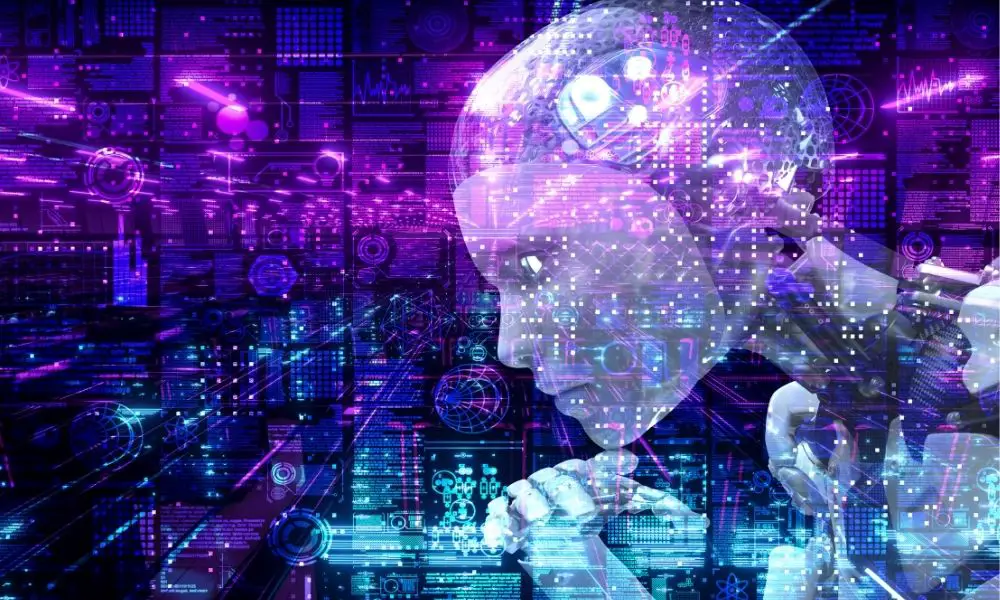From the world-domination theme of movies like The Matrix to the sad little boy-bot of AI, myths do not reflect the current realities of artificial intelligence. Science fiction creates myths and fantasies around science facts to interest audiences. The test for artificial intelligence in books and movies is often a show of emotion and empathy.
In the other extreme, science fiction depicts artificially intelligent beings killing people or seeking to take over the world. True artificial intelligence is neither violent nor emotional but simply able to respond creatively to outside stimulus. AI programs are improving, but emotion and internal motivation are areas where artificial intelligence has far to go.
Emotional Response in Artificial Intelligence (AI)
From movies to comic books, writers often show artificially intelligent beings as robots with feelings. Current technology has not yet achieved an artificially intelligent computer program that exhibits genuine emotion. Although a combination of machine learning and fuzzy logic allows AI to learn to follow social norms or even mimic a human-like response, there is no actual feeling behind the response – just a combination of direct input providing clear instructions based on a system of weighted values for each situation. How does this work?

Artificial intelligence programs can simulate human emotion to some degree through verbal responses and even facial changes in advanced robots. This is possible through extensive programming that establishes social norms for the system. The computer program is given directives to govern appropriate responses to different situations and trained to respond as expected.
When the program responds with the words or actions it has been directed to use, it can give the impression of emotion, but there’s nothing but code behind the response. Each unique situation must be entered into the code with the appropriate set of responses, which results in a highly complicated set of instructions.
Motivation for Artificially Intelligent Programs
Intelligent computers or robots, in science fiction, are motivated by many things. Emotions, fears, or even the desire for world dominion cause these systems to become violent or attempt to enslave the human race. In reality, however, AI programs are not motivated by anything other than their programming and directives.
The most advanced technology can accomplish many amazing feats. AI algorithms can play chess, solve logic problems creatively, simulate a conversation, connect renewable energy and technology, perform medical diagnoses, and achieve many objectives set for them by a human programmer.
Internal motivation, however, is completely lacking in these programs. Just as emotion may be simulated, motivation can be added to an artificially intelligent program as a directive. This does not provide true motivation, however, only the semblance of motivation.
Capabilities of Artificial Intelligence
Science fiction creates many myths regarding the capabilities of artificially intelligent programs. While AI technology is advancing swiftly, there are no programs that experience emotion or internal motivation. The programs simply simulate appropriate emotional responses by following programming directives.
In some cases, such as teaching special needs children, an emotionless robot is a benefit. As technology makes progress and computers get better at learning, the line between algorithm and emotion may become blurred. In the meantime, however, emotional robots remain an interesting science myth.
Creating accurate artificial intelligence is the Holy Grail of the programming world. Although many artificial intelligence algorithms can mimic human responses or learn from experience, they have not yet been able to pass the Turing Test, which is the accepted benchmark for artificial intelligence.
AI programming code is typically approached from one of two perspectives. Either the coder is working toward a programming goal, such as passing the Turing Test, or toward a functional purpose, such as improving security systems.
Copying Human Responses
Early AI programs produced randomly selected responses based on keywords in the input received. Much current AI software used for entertainment works on the same principle.

Many websites offer the chance to chat with an AI program, for example, so that people can experience AI firsthand, but these chatbots are typically quite elementary. Interactions with these programs can occur via text, or for more advanced programs, via verbal conversation. Both use natural language processing to interpret the input from a human.
Passing the Turing Test
The Turing Test gets its name from Alan Turing, who devised a theoretical test to measure a computer’s responses against human behavior. During the test, judges can ask questions without knowing whether the answers are computer-generated or are from a person.
After the conversation, the judges attempt to identify the other “person” as a computer or a human. When judges are less than 50% correct, the computer is judged to be indistinguishable from a human being. No AI program has ever passed this test, despite yearly attempts for the Loebner Prize, which awards cash and prizes to programmers who come close to the goal.
The Turing Test, however, is not the only test of AI accomplishments. Although no computer can pass this test, the other feats of logic and learning that computers are successful with allow them to be called “Artificial Intelligence”.
AI Programmers Create Programs that Learn From Experience
Artificially intelligent computers can, in some cases, user input to learn in a process called machine learning. The combination of supervised and unsupervised learning allows these programs to provide increasingly appropriate responses.
Artificial neural nets mimic the processes in the human brain that are accomplished by biological neural networks. Neural networks connect several smaller nodes, which work both together and side by side, to process information. These networks are highly complex and are the closest reflection of human-like processing that is currently available.
Diane H. Wong is a search engine optimization specialist and freelance team manager. Besides, she is a writer at DoMyWriting so she prefers to spend her spare time working out marketing strategies. In this case, she has an opportunity to share her experience with others and keep up with advancing technologies.





















